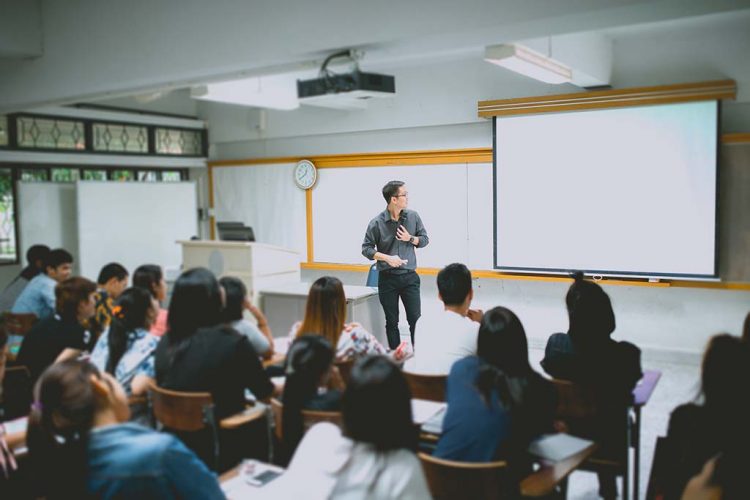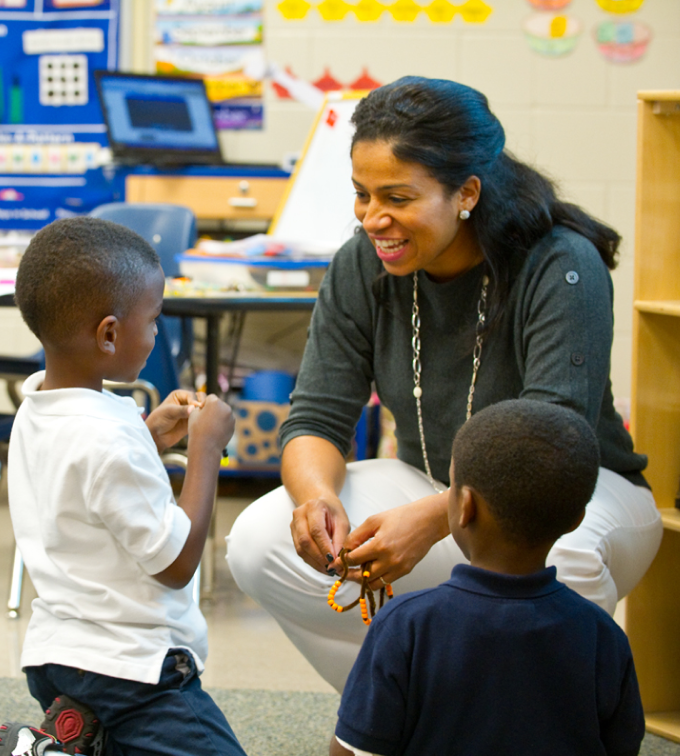Effective Primary Science Tuition Singapore for Better Exam Results
Effective Primary Science Tuition Singapore for Better Exam Results
Blog Article
A Comprehensive Overview to the Different Knowing Techniques in Primary Scientific Research Guideline
The expedition of varied learning approaches in main scientific research instruction provides a possibility for instructors to enhance student interaction and understanding dramatically. By analyzing hands-on discovering strategies, inquiry-based strategies, and collaborative strategies, we can determine efficient methods that cater to different discovering designs.

Hands-On Understanding Strategies
Hands-on knowing methods play a crucial duty in primary science instruction, engaging trainees in energetic expedition and trial and error. These approaches permit students to interact directly with materials and phenomena, promoting a deeper understanding of scientific ideas. By utilizing manipulatives, designs, and real-life experiments, teachers produce a setting where pupils can observe, assume, and check their ideas.
Such methods not only improve comprehension but also grow critical reasoning and analytic abilities. When trainees take part in activities like building simple machines, growing seeds, or performing chain reactions, they are motivated to ask questions and seek solutions via their very own observations. This experiential method helps to debunk complicated scientific concepts, making them extra obtainable and relatable.
In addition, hands-on discovering promotes cooperation amongst peers, as students often work in groups to perform experiments or share searchings for. This team effort not only improves their discovering experience however likewise develops essential social abilities. Eventually, integrating hands-on strategies in key science guideline fosters a long-lasting love of knowing and inquisitiveness about the all-natural world, laying a solid structure for future academic searches in science and past.
Inquiry-Based Learning
Inquiry-based discovering is an instructional method that urges students to ask concerns, examine sensations, and create their very own understanding of clinical principles. This approach moves the focus from conventional teacher-led instruction to a more student-centered experience, where learners take the initiative in their academic trip. By cultivating inquisitiveness, inquiry-based discovering advertises deeper engagement with the material, permitting pupils to explore topics in a significant context.
In method, this strategy frequently includes hands-on experiments, observations, and important reasoning tasks that straighten closely with the scientific method. Students are encouraged to formulate hypotheses, design investigations, and evaluate data, which cultivates vital skills such as analytical and analytical reasoning. The role of the educator in this framework is to facilitate expedition, leading pupils via the questions procedure while urging independent idea and partnership.
Additionally, inquiry-based understanding supports a feeling of possession over the discovering procedure, inspiring trainees to pursue expertise proactively. This approach not only enhances understanding of clinical principles however likewise promotes a lifelong love for understanding, equipping pupils with the abilities required to browse a significantly complicated world.
Collaborative Understanding Approaches
Collaborative knowing strategies empower trainees to involve in significant communications with peers, cultivating a shared duty for their academic results. In key science instruction, these methods urge students to work together to check out clinical principles, address problems, and carry out experiments (primary science tuition Singapore). By taking part in team tasks, students can take advantage of varied viewpoints, enabling richer understanding and retention of scientific understanding
One trick facet of collaborative knowing is the emphasis on interaction abilities. Pupils should verbalize their thoughts, listen proactively to others, and discuss concepts, every one of which are vital expertises in both real-world and scholastic contexts. This social communication not just enhances their understanding of scientific concepts but also promotes team effort and dispute resolution visit homepage skills.
Additionally, collective discovering typically results in raised motivation and involvement. They are a lot more likely to take possession of their discovering journey when pupils see the worth of their contributions within a team. Teachers can promote this procedure by developing organized team tasks that straighten with curriculum objectives while supplying assistance on reliable partnership techniques. On the whole, integrating collaborative discovering methods in key scientific research instruction grows a dynamic discovering environment that prepares trainees for future academic and social difficulties.
Technology Integration in Scientific Research
The assimilation of technology in main scientific research instruction improves learning experiences by offering cutting-edge tools and sources that sustain various mentor techniques, including collective discovering - primary science tuition Singapore. Using electronic platforms, simulations, and interactive applications allows trainees to involve deeply with clinical principles, helping with an extra hands-on strategy to learning
Virtual labs, for example, allow students to perform experiments safely and efficiently, promoting inquiry-based learning. These tools can simulate real-world scientific scenarios, allowing students to visualize complicated processes that would be tough to duplicate in a typical class setup. Additionally, innovation promotes interaction and cooperation amongst trainees, as they can share findings and interact on jobs through online systems.
In addition, multimedia discussions and educational video clips can enhance lessons by satisfying varied discovering styles, making abstract concepts a lot more available. Data evaluation tools additionally equip students to gather and interpret clinical data, enhancing essential thinking abilities. In general, the critical consolidation of technology in main scientific research direction not just enhances involvement but additionally prepares students for a technically innovative society, outfitting them with vital abilities for future scientific ventures.
Set Apart Guideline Strategies
Separated instruction techniques are crucial for dealing with the diverse demands of students in primary science education and learning. These approaches enable educators to tailor their mentor approaches to accommodate varying abilities, rate of interests, and discovering designs within the class. By using differentiated direction, instructors can produce a comprehensive setting that cultivates involvement and boosts understanding of scientific concepts.
One efficient method is to utilize versatile organizing, which enables trainees to work together with peers at similar skill levels or helpful resources with differing perspectives. see post This method motivates peer knowing and promotes vital thinking. Additionally, offering choices in assignments can empower students, permitting them to pick tasks that reverberate with their rate of interests while still satisfying curricular objectives.
Moreover, incorporating tiered jobs is an additional useful method. Deliberately tasks with differing degrees of complexity, teachers can guarantee that all students are suitably challenged, despite their effectiveness. Using formative analyses to assess comprehending additional enables educators to change their instructional approaches dynamically, making sure that each learner obtains the support they require.
Eventually, implementing set apart direction strategies in key scientific research education not just enhances pupil understanding results but additionally cultivates an enthusiasm for science, preparing pupils for future academic quests.

Final Thought
In summary, reliable main scientific research direction necessitates a diverse approach that includes hands-on knowing, inquiry-based approaches, and collective strategies. The combination of technology and separated guideline additionally deals with varied learning styles, cultivating an environment favorable to expedition and crucial reasoning. By implementing these methods, instructors can enhance trainee involvement and comprehension, ultimately supporting a long-lasting passion for science and query. Such thorough approaches are necessary for creating informed and curious future researchers.
The exploration of varied understanding approaches in key science instruction offers a possibility for instructors to improve trainee engagement and comprehension significantly.Hands-on learning strategies play a crucial duty in main science guideline, involving trainees in active expedition and testing.Inquiry-based knowing is an instructional strategy that motivates students to ask inquiries, check out phenomena, and create their own understanding of scientific principles.Collective learning strategies equip students to involve in significant interactions with peers, promoting a shared duty for their academic end results. Generally, integrating joint knowing approaches in key science guideline grows a vibrant discovering environment that prepares pupils for future academic and social obstacles.
Report this page